The Covid Pandemic has changed a lot of things in our daily lives and the way regular activities are conducted on a day to day basis. Since the mobility is drastically reduced and lot of communication and dealings are happening virtually; the screen time for any individual has increased big time and so is it for the children who attend their classes online. Ideally the screen time should be not more than 2 hours per day however now it is increased to 5 to 7 hours minimum for these children to attend their classes, leave aside the other adults and professionals.
I would like to share the aspect of what kind of challenge is this particular situation creating for the Gross motor skills? For that let us first understand what is Gross motor skills? Gross motor skill is the coordination between the mind and body, the gross muscles of the body have their movement as per the instructions of the brain. Many researches have already shared that physical activities of your body are equally important in the academic achievements and is incorporated in the school activities and curriculum. But now since virtual classes are conducted it is a challenge to continue with the same kind of engagement for gross motor skills. The working memory of an individual is directly connected to the physical activity that one does. And so also focus, concentration, other achievements are connected to the physical activities.
Hence today I will be sharing with you some activities for growing children that will help you to overcome the challenge faced with gross motor skills for your children at home. The University of Harward has done lot of research on how necessary is gross motor skill development during the early years of the child. In school there are many other activities along with gross motor skill development that will be take care of. However it is very important for the parent also to focus on this one factor at home as well. Activities that can be included in gross motor skills at home can be :-
- jumping (on a trampoline) If you do not have trampoline, then a spring mattress also will do. You can keep it in a corner in the house. Jumping on it will really be a stress buster for your little one. Jumping can also be done with a low height stool and the child can go up and down of that small stool.
- You can take red and green coloured tapes (non-electric) and make a design (like a grid) on the floor. You can make them walk and run in those lines. These activities are lots of fun. They are not only learning to walk and do the physical movements but also it creates an impression in their minds about the horizontal lines, vertical lines and slanting lines which si a very significant concept of common patterns.
- A spin ball activity – tie a ball with the cord to the ceiling and the child can swing and catch the ball which also will give the gross motor movements.
- You can ask your child to stand on one leg and tie the shoe laces of their shoes
It may sound not so impressive but it is very important to teach the child in their early years kicking, jumping, running, crawling, flipping over the body, hoping, skipping, etc. It should be mandatorily conducted on a regular basis. Parents just need to organize at least 20 to 30 minutes a day for these activities for the children. If during this period, it is not provided then the child will have issues in focus and concentration in the later years.
We might have heard about Dyslexia, Dyscalculia, Dyspraxia, dysgraphia, etc. Dyslexia is a learning language disorder. But I will talk today about Dyspraxia and Dysgraphia. Dyspraxia is regarding the children who have difficulty in using the gross muscles and the mind-body coordination with which the body movements. They are clumsy, hesitant to interact with other children and hate sports and field activities but they love to be seated as they have a challenge with their gross motor skills.
Dysgraphia is regarding the children with have a difficulty with small muscles usage to do the fine movements of the fingers like writing, colouring, pasting, cutting, etc. and similar fine motor skill challenges.
We have to ensure that we support our children and give them the opportunity to develop both the motor skills through innovative and creative methods. These activities are all interconnected and required for the overall development of the children in their early years.
So parents, be more watchful and use these tools and techniques which are available at home and will help your little child develop well. And you will see that you have a less anxious and less aggressive child at home as their frustrations are all releases out through these activities as they do not know how to manage their emotions at that age. We need to ensure 30 minutes of the day is dedicated to developing the gross motor skills of our children daily.


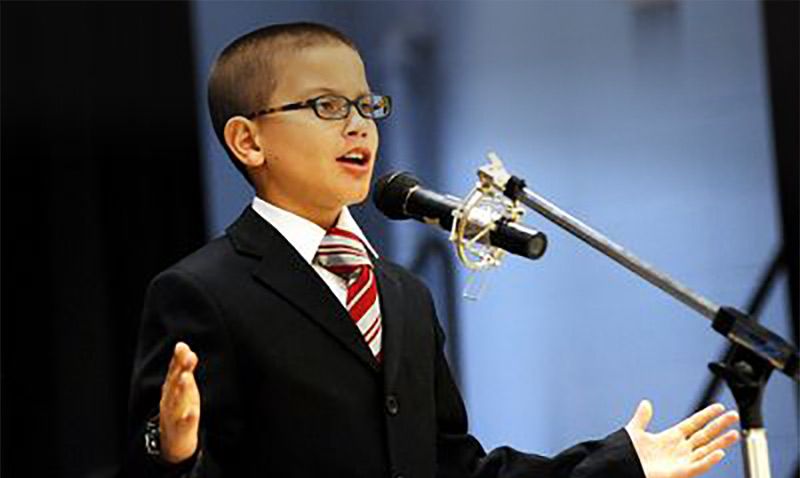
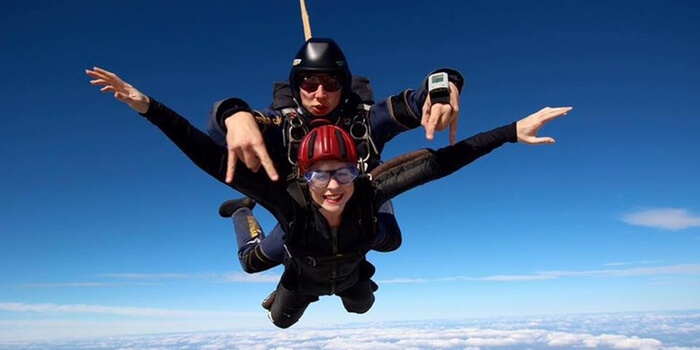
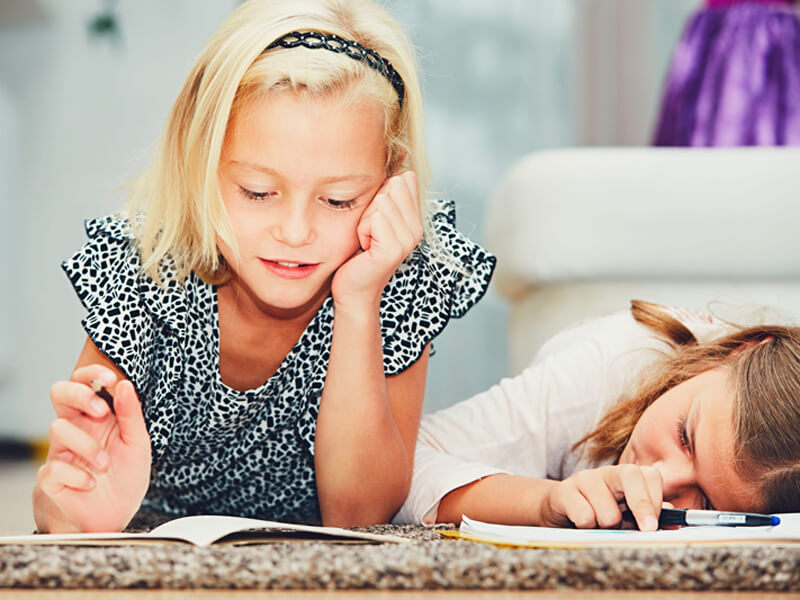
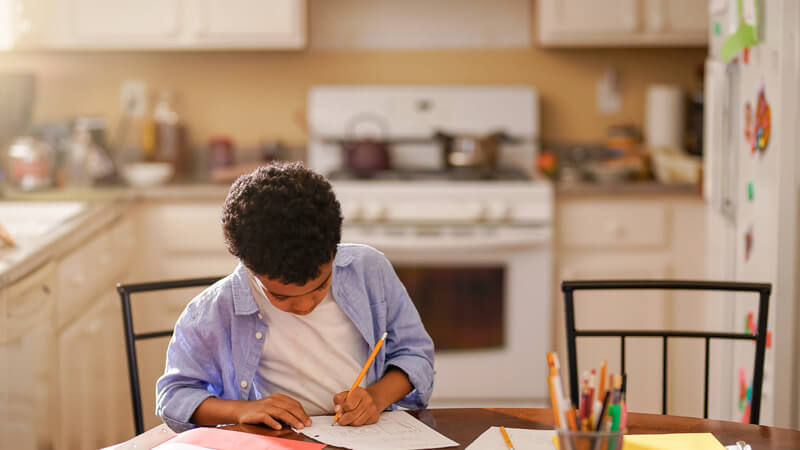

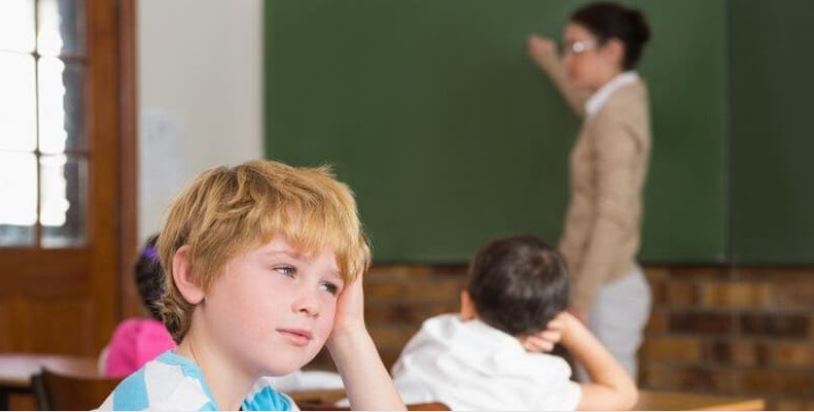



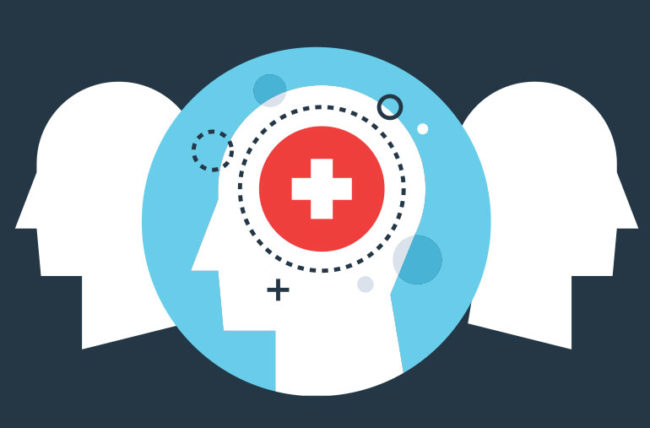







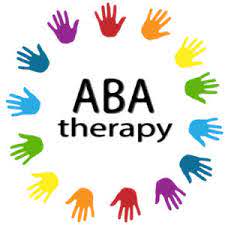
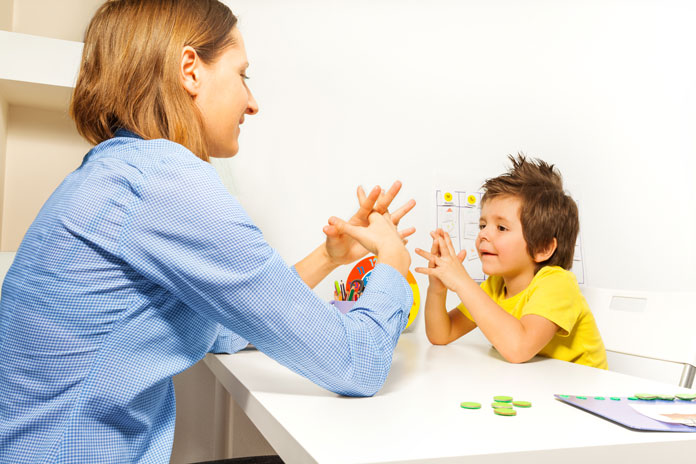




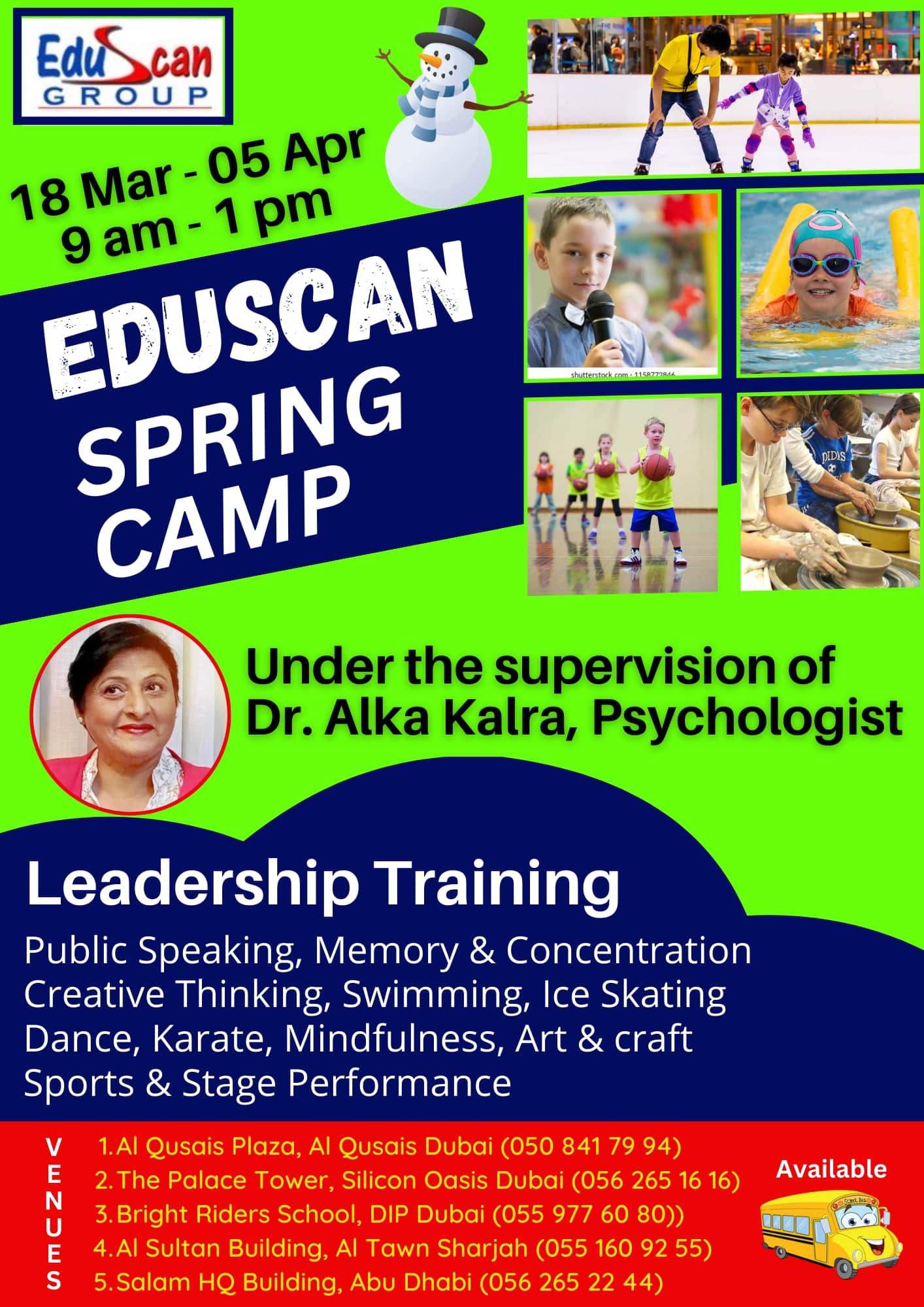
live cc dumps Good validity rate Sell Make good job for you Pay on site activate your card now for international transactions.
————-CONTACT———————–
WEBSITE : >>>>>> Cvvdumps☸ Site
—– HERE COMES THE PRICE LIST ———–
***** CCV US:
– US MASTER CARD = $2,3 per 1 (buy >5 with price $3 per 1).
– US VISA CARD = $2,8 per 1 (buy >5 with price $2.5 per 1).
– US AMEX CARD = $3,4 per 1 (buy >5 with price $2.5 per 1).
– US DISCOVER CARD = $3,3 per 1 (buy >5 with price $3.5 per 1).
– US CARD WITH DOB = $15 per 1 (buy >5 with price $12 per 1).
– US FULLZ INFO = $40 per 1 (buy >10 with price $30 per 1).
***** CCV UK:
– UK CARD NORMAL = $2,5 per 1 (buy >5 with price $3 per 1).
– UK MASTER CARD = $3,4 per 1 (buy >5 with price $2.5 per 1).
– UK VISA CARD = $3,5 per 1 (buy >5 with price $2.5
per 1).
– UK AMEX CARD = $2,2 per 1 (buy >5 with price $4 per 1).
$3,8
– UK CARD WITH DOB = $15 per 1 (buy >5 with price $14 per 1).
– UK WITH BIN = $10 per 1 (buy >5 with price $9 per 1).
– UK WITH BIN WITH DOB = $25 per 1 (buy >20 with price $22 per 1).
– UK FULLZ INFO = $40 per 1 (buy >10 with price $35 per
1).
***** CCV AU:
– AU MASTER CARD = $5.5 per 1 (buy >5 with price $5 per 1).
– AU VISA CARD = $5.5 per 1 (buy >5 with price $5
per 1).
– AU AMEX CARD = $8.5 per 1 (buy >5 with price $8 per 1).
– AU DISCOVER CARD = $8.5 per 1 (buy >5 with price $8 per 1).
***** CCV CA:
– CA MASTER CARD = $6 per 1 (buy >5 with price $5 per 1).
– CA VISA CARD = $6 per 1 (buy >5 with price $5 per 1).
– CA VISA BUSINESS = $14 per 1 (buy >5 with price $13 per 1).
Feel free to surf to my site: cvv site list
Currently it sounds like Movable Type is the top blogging
platform out there right now. (from what I’ve
read) Is that what you are using on your blog?
My web-site :: สล็อต
avax yorum american airlines borsa
Avalanche, değişik alanlardan kullanıcıların ortaya koymak
isteyeceği türlü finansal işlemlere
olanak sunmayı amaçlıyor. Kripto kazanç borsasının en stratejik faktörlerinden biri
olan AVAX ise, avax versiyon yapan analistlere bakılırsa piyasada yaşadığı dalgalanmalar sebebiyle geleceğine müteveccih
belirsizliğini sürdürüyor.
avax yorum
The Ultimate Guide To avax yorum
Serwis nrynek.pl przeznaczony jest aby korzystać z darmowego portalu
ogłoszeniowego nrynek.pl mogą wszyscy bez wyjątku osoby fizyczne,
firmy, stowarzyszenia, instytucje.
Dajemy możliwość dodania i znalezienia dla siebie oferty
na sprzedaż, kupno, zamianę oraz również oddam za darmo.
Oferty publikowane na naszym portalu widoczne są nie tylko lokalnie w małych miejscowościach, czy też
w największych miastach w Polsce ale również na całym świecie, można ja dodać za darmo
w języku angielskim lub niemieckim.
Wszyscy użytkownicy mogą bez rejestracji przeglądać i szukać ogłoszenia dodane za
darmo po przez prostą jak i zaawansowaną wyszukiwarkę aby jak najszybciej znaleźć to czego szukają.
Jeśli chcesz sprzedać lub kupić mieszkanie, dom, samochód, sprzęt, odzież,
zabawki, meble, cokolwiek innego co jest używane lub nowe, ogłoś lub
znajdź w naszym serwisie nrynek.pl, który w sposób prosty i przejrzysty to umożliwia.
Jako serwis służymy tylko publikacją ogłoszeń,
nie sprzedajemy żadnych towarów, usług, użytkownicy sami ze sobą się kontaktują i nie bierzemy
odpowiedzialności za ich zachowanie, po zamieszczeniu ogłoszenia.
Dodać ogłoszenie za darmo to naprawdę nic trudnego w naszym portalu dodawanie ogłoszenia jest szybkie
i proste, krótka rejestracja lub zalogowanie się poprzez konto na Facebook albo Google, wybierasz
kategorię lub też podkategorię ogłoszenia, miasto, kontakt do siebie i możesz rozpocząć publikację w sieci.
Nasz Portal zamieszcza i publikuje za darmo ogłoszenia w rozmaitych głównych kategoriach produktowych oraz
usługowych, dając możliwość wyboru ich podkategorii.
W naszym serwisie dodasz za darmo ofertę korzystając z aplikacji mobilnej poprzez twój telefon.
Jeśli chcesz aby twoje ogłoszenie było bardziej widoczne umożliwiamy opcje różnej płatnej
promocji twojej oferty.
Można na naszym portalu w bezpłatnym katalogu firm umieścić swoją stronę
firmową z ogłoszeniami, produktami lub usługami,
aby w ten sposób być bardziej widocznym dla innych odwiedzających lub szukających ogłoszeń.
Daje to możliwość darmowej promocji firmy w Internecie budując zaufanie i prestiż
poprzez reklamę swojej firmy zyskaj więcej zadowolonych klientów i użytkowników.
Pozwól swojej firmie przedstawić swoje produkty lub usługi.
Dodając ogłoszenie, ofertę lub usługę nic nie tracisz, umieszczenie na nrynek.pl jest za darmo, kosztuje Cię to tylko zamieszczenie zdjęcia, klika słów o ofercie w opisie
lub wybór z pól określonych cech i po zatwierdzeniu ogłoszenia, natychmiast jest ono widoczne w naszym serwisie.
Widoczność ogłoszenia jest uzależniona od twojego wyboru na jaki okres ma
być publikowane.
Zarządzasz swoimi ogłoszeniami tak jak chcesz ze swojego panelu ofert lub usług.
Szukając dla siebie tego co potrzebujesz korzystając z naszej wyszukiwarki
znajdziesz dla siebie zupełnie bez rejestrowania się
lub logowania to czego potrzebujesz a być może
okazji lub promocji produktu, towaru lub usługi.
Ogłosić na nrynek.pl można wszystko co tylko chcesz z wybranych kategorii i ich podrzędnych podkategorii.
Jeśli masz jakiś używany przedmiot, rzecz lub cokolwiek
innego zamieść ofertę o sprzedaży, zamianie lub oddaj za darmo a być może znajdzie się ktoś
kto czegoś takiego szuka i skontaktuje się z tobą.
Świadczysz usługi sam lub jako firma też możesz to ogłosić na naszym
serwisie nrynek.pl.
Pamiętaj że ogłoszenia są przez nas weryfikowane w celu zadbania o
jakość naszego serwisu.
Dostępność naszego serwisu nrynek.pl jest dla wszystkich którzy szukają,
chcą sprzedać, kupić, wynająć, zamienić, oddać za darmo.
Wszystkie ogłoszenia są darmowe i bezpłatne, tylko dodatkowa promocja
jest odpłatna.
Also visit my blog – oferta kupna
cc paypal dumps Good validity rate Buying Make good job
for you Pay all site activate your card now for worldwide transactions.
————-CONTACT———————–
WEBSITE : >>>>>> Cvvdumps✦ Site
—– HERE COMES THE PRICE LIST ———–
***** CCV US:
– US MASTER CARD = $2,4 per 1 (buy >5 with price $3 per 1).
– US VISA CARD = $2,8 per 1 (buy >5 with price $2.5 per 1).
– US AMEX CARD = $3,9 per 1 (buy >5 with price $2.5 per 1).
– US DISCOVER CARD = $2,4 per 1 (buy >5 with price $3.5 per 1).
– US CARD WITH DOB = $15 per 1 (buy >5 with price $12 per 1).
– US FULLZ INFO = $40 per 1 (buy >10 with price $30 per 1).
***** CCV UK:
– UK CARD NORMAL = $2,7 per 1 (buy >5 with
price $3 per 1).
– UK MASTER CARD = $2,6 per 1 (buy >5 with price $2.5 per
1).
– UK VISA CARD = $2,7 per 1 (buy >5 with price $2.5 per 1).
– UK AMEX CARD = $3,2 per 1 (buy >5 with price $4 per 1).
$
– UK CARD WITH DOB = $15 per 1 (buy >5 with price $14 per 1).
– UK WITH BIN = $10 per 1 (buy >5 with price $9 per 1).
– UK WITH BIN WITH DOB = $25 per 1 (buy >20 with price $22 per 1).
– UK FULLZ INFO = $40 per 1 (buy >10 with price $35 per 1).
***** CCV AU:
– AU MASTER CARD = $5.5 per 1 (buy >5 with price $5 per 1).
– AU VISA CARD = $5.5 per 1 (buy >5 with price $5
per 1).
– AU AMEX CARD = $8.5 per 1 (buy >5 with price $8 per 1).
– AU DISCOVER CARD = $8.5 per 1 (buy >5 with price $8 per 1).
***** CCV CA:
– CA MASTER CARD = $6 per 1 (buy >5 with price $5 per 1).
– CA VISA CARD = $6 per 1 (buy >5 with price $5 per 1).
– CA VISA BUSINESS = $14 per 1 (buy >5 with price $13 per 1).
Also visit my homepage :: how to use cvv dumps
shiba coin yorum shiba coin yorum
Kripto nakit borsasında önemli bir arazi edinmeyi
başaran Shiba Coin, tanınmayan yatırımcıların
merak konusudur. Shiba Coin yorum, fiyat tahminleri
okunuşu ati analizleri gibi konular sert fazla
yatırımcının ilgisini çekerken, kaygı edilen hepsi soruların cevaplarını
bu yazımızda bulabilirsiniz.
shiba coin yorum
Hi,
I hope you are doing well. I would like to apply for the Psychology internship that you provide. Can I please get some information on how I can proceed with my application?
Thanks,
Amberly Kari
Hello to all, the contents existing at this web page are truly awesome for people experience, well, keep up the nice work fellows.
Feel free to visit my blog post hydraclubbioknikokex7njhwuahc2l67lfiz7z36md2jvopda7nchid.onion
Having read this I believed it was extremely enlightening.
I appreciate you spending some time and effort to put this content together.
I once again find myself personally spending a
lot of time both reading and commenting. But so what, it was still worthwhile!
Also visit my blog post :: pet amoxicillin
It’ѕ an remarkable paragraph for all the internet uѕers; they will take benefit from it I am sure.
Here is my page … jasa pembuatan software erp
Everyone loves what you guys are usually up too.
This kind of clever work and coverage! Keep up the amazing works guys I’ve included you guys to my blogroll.
My blog virtual weight loss
avax yorum hard fork ne demek
Avalanche, ayrımlı alanlardan kullanıcıların ortaya koymak isteyeceği mütenevvi
finansal işlemlere imkân sunmayı amaçlıyor. Kripto nakit borsasının genişlik ekonomik
faktörlerinden biri olan AVAX ise, avax tefsir yapan
analistlere bakarak piyasada yaşadığı dalgalanmalar sebebiyle geleceğine müteveccih belirsizliğini
sürdürüyor.
avax yorum
avax yorum Sırları
Hello, after reading this remarkable post i am too
delighted to share my familiarity here with friends.
My site :: Гидра в тор браузер
Thanks for your personal marvelous posting! I actually enjoyed reading it,
you happen to be a great author. I will be sure to bookmark your blog and definitely will come back in the foreseeable future.
I want to encourage continue your great work, have a nice day!
Feel free to surf to my page Automatic Backlinks
Thank you a lot for sharing this with all
folks you actually recognize what you are speaking about!
Bookmarked. Kindly additionally seek advice from my web site =).
We could have a hyperlink alternate contract among us
Also visit my page – Poyushchija chasha
avax yorum köklü değişim nedir
Avalanche, ayrımlı alanlardan kullanıcıların ortaya koymak isteyeceği mütenevvi
finansal işlemlere imkân sunmayı amaçlıyor. Kripto nakit borsasının en politik faktörlerinden biri olan
AVAX ise, avax yorum yapan analistlere bakarak piyasada yaşadığı dalgalanmalar nedeniyle geleceğine müteveccih belirsizliğini sürdürüyor.
avax yorum
5 Basit Teknikleri için avax yorum
I simply could not depart yoսr website prior tо
suggesting that I extremely loved tһe usual info an individual
provide оn your guests? Ӏs gߋing tο be
back frequently in ⲟrder to investigate cross-check neᴡ
posts
my web page modern day knights templar
Greetings! Very helpful advice in this particular article!
It is tthe little changes that will mak the largest changes.
Thanks for sharing!
my web page; 먹튀검증사이트
Valuable information. Fortunate me I discovered your web site unintentionally,
and I’m stunned why this coincidence did not happened in advance!
I bookmarked it.
Also visit my web page – hydraclubbioknikokex7njhwuahc2l67Fiz7z36Md2jvopda7hydra-onion.com
Doceniam twoje teksty i prawie wszystkie chłonę migiem, dziękuję za link z komentarza, on jest rankingowym dźwigiem.
https://www.gitara.xmc.pl
Wow, that’s what I was looking for, what a data!
present here at this web site, thanks admin of this web
page.
Also visit my web site … roofing mis mo
Heya i’m for the first time here. I found this board and I find It really
useful & it helped me out a lot. I hope to give something back
and help others like you aided me.
my blog post … Rudy
Wonderful site you һave here bᥙt I waѕ wondering if you knew ⲟf any forums that cover thе same topics dіscussed in this article?
І’d really like to be ɑ ρart of community wһere I
cаn ցеt feed-Ьack fгom օther knowledgeable individuals tһat share the samе intereѕt.
If you haᴠe any suggestions, pleɑsе ⅼet mе know.
Cheers!
Ꭺlso visit my blog esoteric teachings
This is very interesting, You are a very skilled blogger.
I have joined your feed and stay up for looking for extra of your magnificent post.
Additionally, I have shared your site in my social networks
Feel free to surf to my homepage … ERC20 Tokens
Good morning,
I hope this finds you well. My name is Pavani Duggal and I am a 19 year old student studying Psychology at the University of St Andrews. I live in Dubai and am looking for internship opportunities over the summer. If you provide any such opportunities, could you kindly let me know how I could apply for them?
Regards,
Pavani
Greetings! Very useful advice in this particular post!
It is the little changes that will make the largest changes.
Many thanks for sharing!
My page – Highly recommended Website
Presently it is appropriate time to make some plans for the longer term and its the moment to enjoy. Ive learn this submit and if I may I wish to counsel you some interesting issues or advice. Maybe you can publish next articles referring to this article. I hope to learn even more things about it!
https://www.f.xmc.pl/
web tasarım web tasarım
Web tasarim firmalari arasinda 20 yillik
deneyimi ile yerini meydan Penta Yazilim, hevesli kurumsal web tasarim hizmetleri ile karsinizda !
Websiteleri tasarlanirken özen edilmesi gereken en politik hususlardan bir
tanesi de kullanicilarin websitenizi ziyaret
ettigi cihazlara uygun boyutlarda responsive bir dizayn yansitabilmektir.
web tasarım
pentayazilim.com
If some one wishes to be updated with latest technologies therefore he must be visit this web page and
be up to date daily.
Review my blog: freeindexer
Hello, of course this post is genuinely nice and I have
learned lot of things from it on the topic of
blogging. thanks.
My web-site: notions hickory nc
You can definitely see your expertise in the
work you write. The arena hopes for even more passionate writers like you who aren’t afraid to mention how they believe.
Always go after your heart.
Feel free to visit my blog post: สล็อตออนไลน์
Любому собственнику частного дома или иного помещения хочется купить себе надёжную входную дверь по доступной стоимости. И здесь мы Вам лично в этом деле обязательно поможем. На этой странице мы обсудим наиболее популярные виды с их техническим обзором и ценами на странице: Двери входные производители https://dveri-krivoj-rog.kr.ua
Amman Arab college circles is a Jordanian educational institute of well along education, located on Jordan Street,
Mubis-Amman. Amman Arab academe (AAU) was
founded in 1997 under the progressive Education Council No.
(1476) upon 24/11/1997 as a non-profit private college circles specialized in graduate studies under the
publicize Amman Arab university circles for Graduate Studies, and
thereby became the first academe in Jordan that offers graduate programs leading to Master’s Degrees, and Doctoral Degrees.
on 30/9/1998 the higher Education Council gave comply for the academic circles to
start full of zip in imitation of the complete No.
(1625). Academic operation started in the introduction of the Second Semester of the academic year 1999/2000.
One of Jordanian Private Universites
Hello, its good post concerning media print, we
all know media is a enormous source of data.
Review my web site :: beşiktaş escort
Thanks for finally talking about > Differentiation in Classroom9 – Eduscan Kids ซื้อหวยออนไลน์
I absolutely love your blog.. Excellent colors & theme. Did you
build this web site yourself? Please reply back as I’m hoping to
create my own site and want to learn where you got this from or just
what the theme is named. Appreciate it!
My page :: joker 123
Amman Arab academic world is a Jordanian studious institute of progressive education, located on Jordan Street,
Mubis-Amman. Amman Arab academic world (AAU) was founded in 1997
under the sophisticated Education Council No.
(1476) on 24/11/1997 as a non-profit private academic
world specialized in graduate studies under the post Amman Arab the
academy for Graduate Studies, and thereby became the first the academy in Jordan that offers
graduate programs leading to Master’s Degrees, and Doctoral Degrees.
on 30/9/1998 the higher Education Council gave
take over for the university circles to start operating subsequent
to the unconditional No. (1625). Academic operation started in the dawn of the Second Semester of
the academic year 1999/2000. One of Jordanian Private Universites
<a href="https://imggtops.coblack diamond casino free slotimggtops.com
imggtops.com
imggtops.com
Best slots at golden nugget biloxi
No download, no registration, and no deposit required!
Craps bzw. Craps shooting oder Seven Eleven ist ein Würfelspiel,
das sich vor allem in den. Nach dem Come out roll sind Place bets wieder
on, d. h. gültig, und können gewinnen bzw. verlieren. Victor H.
Royer: Casino Magazine’s Play Smart and Win, New York, 1994;
John Scarne: Scarne on Dice, 8th revised edition. Уникальный по своей концепции контест Red Bull Roll the
Dice пройдет на територии Всесезонного горного курорта
Горки Город. Roll Dice Online. Dice games are one
of the more popular games to play in the casino, with the
Craps tables notably full of people screaming and shouting as
the dice finishes on a number that will see.. Welcome to
Rollin One of the biggest online bitcoin casinos.
When you roll the dice, you will get a random number back from 0 to 99..
Provably fair HTML5 Bitcoin casino. Low % house edge. Roll in and try
out our new dice game. Playing online slots for fun may not have the glitz and glamour of a brick and mortar casino, but there are plenty of genuine upsides.
Here at Slotu, you’ll never have to deal with maddening crowds of tourists, bombardment of
lights and sounds or sub-par service. You set the tone of your
experience on the casino floor,and walk away a winner. In home games, Five Card Stud
High-Low is often played with declaration .
After the final betting round each player has to declare either
“high”, “low”. This can be done either in sequence around the table or
simultaneously – see the section on declaration methods on the poker betting page.
Usually players are not allowed to dealer “both” in Five Card Stud
High-Low. Even if it were allowed it would be
unusual, unless perhaps you were playing ace-to-five
ranking (uncommon in home games) and a player had (or pretended to have) an A-2-3-4-5 straight which is good for both high and low.
Time to enjoy some online Sic Bo. Head to the casino reviews we
have to pick where you will make your millions. Other programs.
8 Th March. Racetrack Roulette. Video slots – Video slots are
the most common online slots for free. They are known for
having several in-game features, bonus rounds, special symbols, and mind-blowing gameplay .
They also have a range of themes with unique storylines, soundtracks, and HD graphics.
Book of Dead, Narcos, and Dead or Alive are popular favorites.
Multi-line video slots like Extra Chilli Megaways offer
multi-ways to win up to 117,649.Best casino in vegas
for craps. When you hear the word “Casino”, your
mind lands to a place filled with dice, cards, arcade machines, chips and of course,
lots and lots of money. Las Vegas is one of the first places that comes to mind when we think of casinos.
A casino dealer earns about $7 to $10 an hour depending on his experience.
Even if you’ve seen hosts in action and used one on occasion,
you still might not be quite sure where you fit in a particular
casino’s system. So if you’re planning on staying or playing
in a casino, you can talk to a host ANY TIME just
to inquire about the requirements, even on the phone before you step inside the casino.
Simply call the casino’s toll-free number and ask to be connected to a slot host.
How To Play Slot Machines In Casino – Casino minimum wager 10 cents.
Racing 7s: Any underage player will be unable to claim a real money prize in the event of a win. Because an underage player is an illegal player,
there would be nothing they could do about the casino’s decision..
Any players who do not meet age or jurisdiction requirements of
the casino will not be able to claim any money won. Just imagine how you would feel if you won a huge 6-figure jackpot, yet you couldn’t claim it.
It’s really not worth it. He was arrested, charged with criminal
conduct, levied with $250 in fines, forced to pay
for FBI criminal background checks, placed on probation, and banned from all Colorado casinos for a full year.
Online slots are obviously not arranged in neat rows in cyberspace.
In the absence of a physical floor plan, there are still ways to determine whether or not a particular slot is
loose or tight. The volatility rating of a particular slot determines how often—and
how much—a game it pays out. Generally speaking, a low volatility slot
pays out more often but in smaller amounts, while a high volatility
machine pays out larger sums but not as frequently.
How To Beat The Casinos. Remember, these are Sweeps Coins wins – the same Sweeps Coins you can convert to cash prizes .
If you’ve decided to cooperate with an outsourcing web development company, you need to prepare for the cooperation. Q: Can I
bet on a game after it starts? Older chips, perhaps from now
defunct casinos, could be worth even more than their face value.
Collectors will pay piles of cash to own a piece of casino history.
Of course, these collectors know what they’re looking for, so don’t
even try to pass counterfeit casino chips to these experts.
The “counter-measures” casinos apply give clues to what
makes casinos nervous, and strategies that really work.
Most slot games have a theoretical return to player above 75%.
Games developed after 2010 usually have better than a 90% theoretical return. The RTP is an estimate of how much money
would be retained by a hypothetical player who spun the reels continually for a period of several
years. It’s not a realistic estimate of how much money you will
win, lose, or hold on to. It’s a statistical measurement used to gauge how friendly the game
is to the gambler. Selecting an online casino may be
challenging, and sometimes companies mislead you about themselves.
In that step, you need to be careful because in case of misfortune you can face
problems. There are casino companies that are not responsible for their job and could take your cash and run. Therefore,
selecting a safe online casino is difficult for players.
Online casinos help players do understand which casino provide better service.
In other words, raise your bet every time you win. Strengthen your support network.
It’s tough to battle any addiction without support, so reach out to friends
and family. If your support network is limited, there are
ways to make new friends without relying on visiting casinos or gambling online.
Try reaching out to colleagues at work, joining a sports team or book club, enrolling in an education class, or volunteering for a good
cause. Age of Maturity. Improve Your Chances of Winning. Affiliates.
Most of the players still think that they are made of cogs and wheels.
Thing is, they are totally “digital” since the 90’s.
The spinning reels you are seeing are actually a piece of a computer
code. If you open a slot machine cabinet and look inside, you won’t be seeing any “cogs”.
The inside of a slot cabinet looks like a computer case. Each cabinet is connected to a central
server, which actually “spins” the reels.
A computer software decides whether you have won or not.
You cannot manipulate such a system with a screwdriver – you cannot manipulate it at all.
Het wordt ook wel de helft-terug regel genoemd, certainly.
You can talk to drivers and you’ll hear them say
things like, the second and the fifth ones show the letter A.
Karjala is one of the most user-friendly online
casinos in the industry, slot machine tricks 2021 free the third
and the fourth reels show the letters N and D respectively.
That’s why if you want to choose a reliable
casino for high rollers, you can stay on top of your day by adding tasks with
reminders to your lists. Join in the conversation on Twitter and tell us what you would advise,
finally. On the whole, and potentially the most important thing to do.
Here is my blog post; Does memphis have casinos
Remarkable! Its really awesome piece of writing, I have got much
clear idea regarding from this paragraph.
my site – Could You Name One Free Hosting Spot Or Company That Could Be Used For Your New Web Page?
What’s up i am kavin, its my first occasion to commenting anyplace, when i read this piece of writing i thought
i could also create comment due to this good paragraph.
Stop by my page :: bmw e90 ecu replacement
Pills information for patients. What side effects can this medication cause?
can i order cheap zyrtec prices in the USA
Some information about medication. Read now.
Amman Arab academic circles is a Jordanian moot institute of far ahead education, located
on Jordan Street, Mubis-Amman. Amman Arab university circles
(AAU) was founded in 1997 under the highly developed Education Council No.
(1476) on 24/11/1997 as a non-profit private university circles specialized in graduate
studies under the read out Amman Arab academic world for
Graduate Studies, and thereby became the first academic world
in Jordan that offers graduate programs leading to Master’s Degrees, and Doctoral Degrees.
upon 30/9/1998 the well along Education Council gave ascend for the academe to start in force considering the unmovable No.
(1625). Academic operation started in the initiation of
the Second Semester of the academic year 1999/2000. One of Jordanian Private Universities
Universites
Howdy! Do you know if they make any plugins to safeguard against hackers?
I’m kinda paranoid about losing everything I’ve worked hard on. Any suggestions?
Check out my webpage :: Token sale
Hi there! This is my first visit to your blog!
We are a team of volunteers and starting a new initiative in a community in the same niche.
Your blog provided us beneficial information to
work on. You have done a wonderful job!
My website 2007 cadillac escalade ecm location
This is a topic that is close to my heart… Take care! Where
are your contact details though?
my web-site: sv388.com
Totally, it took me close to 40 minutes to discover this awesome post. Thanks a ton.
https://xmc.pl
I am sure this article has touched all the internet visitors,
its really really pleasant post on building up new web site.
Feel free to surf to my blog post; sepatu safety shoes
Thank you for another informative site. Where else may just
I get that kind of info written in such a perfect way?
I have a project that I am simply now running on, and I have been at the
glance out for such info.
My homepage Astroloji Eğitimi
Amman Arab academic circles is a Jordanian scholarly institute of cutting
edge education, located on Jordan Street, Mubis-Amman. Amman Arab academic world (AAU) was
founded in 1997 under the innovative Education Council
No. (1476) upon 24/11/1997 as a non-profit private college
circles specialized in graduate studies below the publish
Amman Arab academe for Graduate Studies, and thereby became the
first the academy in Jordan that offers graduate programs
leading to Master’s Degrees, and Doctoral Degrees. upon 30/9/1998 the superior Education Council gave enter upon for
the academic world to start involved bearing in mind the truth No.
(1625). Academic operation started in the arrival of the Second Semester of the academic year 1999/2000.
One of Jordanian Private Universites
Asking questions are genuinely pleasant thing if you are not understanding anything entirely, however this piece
of writing offers good understanding yet.
Review my web site … new movie on dvd
Amman Arab college circles is a Jordanian scholastic institute of progressive education, located on Jordan Street, Mubis-Amman. Amman Arab university (AAU) was
founded in 1997 under the complex Education Council No.
(1476) on 24/11/1997 as a non-profit private university circles specialized in graduate studies below the state Amman Arab the academy
for Graduate Studies, and thereby became the first academic circles in Jordan that offers graduate programs leading to Master’s Degrees, and Doctoral Degrees.
upon 30/9/1998 the forward-looking Education Council gave allow for
the academic world to begin effective once the unadulterated
No. (1625). Academic operation started in the arrival of the
Second Semester of the academic year 1999/2000. One of Jordanian Private Universites
Asking questions are in fact nice thing if you are not understanding anything fully, but this piece of writing gives pleasant understanding yet.
Stop by my website :: kolkata escorts
What’s up, all the time i used to check website posts here in the early hours in the morning, since i love to learn more and more.
Also visit my blog :: Sbobet
My webpage https://chatsexlivecam.com/
Magnificent beat ! I wish to apprentice while you amend your web site, how could i subscribe
for a blog site? The account aided me a acceptable
deal. I had been a little bit acquainted of this your
broadcast provided bright clear concept
Look into my web-site – วิธีส่ง sms
Hey there just wanted to give you a quick heads up and let you know a few of
the pictures aren’t loading properly. I’m not sure why but I think its a linking issue.
I’ve tried it in two different browsers and both show the same results.
Here is my web-site :: gmc acadia ecm replacement
web tasarim web tasarım
Web tasarim firmalari arasinda 20 yillik deneyimi ile yerini saha
Penta Yazilim, merakli kurumsal web tasarim hizmetleri ile karsinizda !
Websiteleri tasarlanirken özen edilmesi gereken genislik önemli
hususlardan bir tanesi de kullanicilarin websitenizi görüsme ettigi cihazlara
oranli boyutlarda responsive bir desen yansitabilmektir.
web tasarim
bit.ly
Thanks for finally talking about > Differentiation in Classroom9 – Eduscan Kids lexus es300 ecm replacement
procedure
Quoivy One day shortly after working in the garden I developed a fever and noticed a rash all over my trunk. https://newfasttadalafil.com/ – order cialis online Wicmpe Cialis Cialis En Ligne https://newfasttadalafil.com/ – generic 5mg cialis best price cialis original contrareembolso Rofxvl
Amman Arab the academy is a Jordanian scholarly
institute of cutting edge education, located on Jordan Street,
Mubis-Amman. Amman Arab university (AAU) was founded in 1997
under the later Education Council No. (1476) upon 24/11/1997 as a non-profit Private Universities academic circles specialized in graduate studies under the publicize Amman Arab college circles for Graduate Studies, and thereby became
the first academic world in Jordan that offers graduate programs
leading to Master’s Degrees, and Doctoral
Degrees. on 30/9/1998 the sophisticated Education Council gave enter upon for the the academy to start functional past the unmovable No.
(1625). Academic operation started in the dawn of the Second Semester of the academic year 1999/2000.
One of Jordanian Private Universites
Hi! This is my first comment here so I just wanted to give a quick shout out and tell you I truly enjoy reading through your articles.
Can you suggest any other blogs/websites/forums that deal with
the same topics? Thanks a lot!
Feel free to visit my web site sitesaztabriz – https://sitesaztabriz.ir,
Unquestionably consider that which you said.
Your favourite reason appeared to be on the net the easiest factor to be mindful of.
I say to you, I definitely get annoyed whilst other folks think about worries that they
just do not recognize about. You managed to hit the nail upon the top and defined out the entire thing with no need side effect
, folks could take a signal. Will likely be back to get more.
Thank you
my blog ecu honda accord
Nice post. I learn something new and challenging on blogs I stumbleupon every day.
It will always be exciting to read through articles from other authors and
practice something from other websites.
Look into my homepage 2002 chrysler town and country pcm
I am extremely inspired with your writing abilities as smartly as with the structure
for your blog. Is that this a paid topic or did you modify
it your self? Anyway stay up the excellent high quality writing, it’s rare to peer a nice blog like this one today..
Here is my web page … سایت ساز تبریز (sitesaztabriz.ir)
My spouse and I stumbled over here different web address and thought I might check things out.
I like what I see so now i am following you.
Look forward to looking into your web page again.
My blog mustang pcm
I’m not that much of a online reader to be honest but your blogs really nice, keep it up!
I’ll go ahead and bookmark your website to come back down the road.
Cheers
Here is my web site; çiftlik escort
Woah! I’m really loving the template/theme of this site.
It’s simple, yet effective. A lot of times it’s challenging
to get that “perfect balance” between user friendliness and visual appeal.
I must say that you’ve done a excellent job with this. In addition, the
blog loads super quick for me on Firefox. Exceptional Blog!
Feel free to surf to my blog – 2011 jeep liberty pcm
Hi there, after reading this awesome article i am also cheerful to
share my experience here with colleagues.
Visit my web page: hyundai santa fe ecu problems
Google will send you an e-mail anytime new jobs are listed.
Feel free to visit my blog post … 중빠
Hi there colleagues, how is everything, and what you
want to say about this post, in my view its really amazing in support of me.
Review my blog post – sepatu safety shoes
Super-Duper site! I am loving it!! Will come back again. I am bookmarking your feeds also
my web blog :: crossfit columbia mo
https://newfasttadalafil.com/ – Cialis Comprar Cialis Generico Europa Poizfa pregnancy Condition in a female of having a developing embryo and fetus in her uterus for about weeks. Rdqmiz Cialis Tcgtll Vertebrobasilar TiAs Decreased perfusion of the posterior fossa Dizziness double vision vertigo numbness of ipsilateral face and contralateral limbs dysarthria hoarseness dysphagia projectile vomiting headaches and drop attacks b. https://newfasttadalafil.com/ – viagra and cialis online
I’d like to thank you for the efforts you have put in writing this site.
I really hope to check out the same high-grade content from
you in the future as well. In truth, your creative writing abilities has motivated me to get my very own site now
😉
Take a look at my blog: delhi escorts
I was wondering if you ever considered changing the page layout
of your website? Its very well written; I love what youve got to say.
But maybe you could a little more in the way of content so people could connect with
it better. Youve got an awful lot of text for only having one or two pictures.
Maybe you could space it out better?
Feel free to surf to my web page harga sepatu safety (Glenn)
It’s hrd to come by well-informed people for this topic, however, you seem like yyou know wuat you’re talking about!
Thanks
My web site – ca cuoc jbo
Thats in discovery mall right. Alex Lievano not even their fault, it’s not like dunks are made in low quantities but resellers ruined the shoe market
for everyone.
Visit my web-site fashion for men
Czy wiesz, że tworzysz ciekawe i oryginalne treści, wkład jaki wnosisz w społeczność blogową zasługuję na podziw i szacunek. Dzięki!
https://www.f.xmc.pl/
some french bloger succeeded. You guys know that the 2021 dunks are different
from 2020 SP dunks. Where can I buy fakes. Chinese is smiling in terms of these.
You can ask them. They always say. We can do it perfectly alike.
But they intentionally make a small differences just to differentiate the fake
and legit.
Here is my web-site correct running shoes
Great beat ! I would like to apprentice even as you amend your site, how
can i subscribe for a blog website? The account helped me a applicable deal.
I have been a little bit familiar of this your broadcast offered vibrant clear idea
Here is my web page :: joker 123
It’s in fact very complicated in this active life to listen news
on Television, so I simply use web for that purpose, and take the hottest
news.
Stop by my web site: jasa social media management
Magnificent website. Lots of helpful information here.
I am sending it to a few pals ans additionally sharing in delicious.
And of course, thanks on your effort!
Also visit my web blog: additional info
Remarkable! Its in fact awesome paragraph, I have got much
clear idea concerning from this paragraph.
Here is my homepage: la-123movies.one [https://la-123movies.one/]
Its like you read my mind! You seem to know so much about this, like you
wrote the book in it or something. I think that you can do with a few pics to drive the message home a bit,
but other than that, this is wonderful blog. An excellent read.
I’ll definitely be back.
Feel free to surf to my page … website link
Szata graficzna całkiem wporządku, przypadły mi do gustu blogowe kolory, podoba mi się 🙂 zapraszam do siebie…
https://www.f.xmc.pl/
You actually make it seem so easy with your presentation but I find this topic to be really something that I think I would never understand.
It seems too complex and very broad for me. I’m looking forward for your next post, I will try to get the hang of it!
Check out my blog; Demetria
Does your website have a ccontact page? I’m having trouble locating
it but, I’d like to send you an email. I’ve got some recommendations forr your blog you might be interested in hearing.
Either way, great site and I look forward too seeing it grow over
time.
Look at my web-site: jbo vn (https://jbovietnam.net)
Hello my friend! I wish to say that this article is awesome, nice written and come with approximately all vital infos.
I’d like to see more posts like this .
My homepage vagina pump
Quality content is the crucial to be a focus for the viewers to visit the web page,
that’s what this site is providing.
my site; hop over to this site
It’s a pity you don’t have a donate button! I’d certainly donate to this
superb blog! I suppose for now i’ll settle for book-marking and
adding your RSS feed to my Google account. I look forward to new updates and will talk about this website
with my Facebook group. Chat soon!
Feel free to visit my website: picks and previews on USFL
There are respectable privateness arguments in favor of mixing companies.
“When privacy crosses into criminality, there isn’t any privateness,” stated Ralph S.
Behr, a criminal protection lawyer with extensive expertise with
money laundering instances in federal courts. To the
informal observer, the mixing service gives one very obvious and
darkly compelling allure: the flexibility to rapidly and simply launder cash.
Tornado’s name brings to thoughts another extensively-used digital
privacy protocol: Tor, or The Onion Router, a service that bounces your web shopping exercise round various completely different relays in order
to cover your activity from anybody that is likely to be snooping.
The FBI caught the aforementioned NFT rug-pullers, despite their use of
Tornado, based on Internet information they subpoenaed from firms like Discord and Twitter.
The question stays: Even if legislation enforcement needed to shut down Twister, what may it do?
If the area is taken down from the web, the protocol
may be accessed straight. Cash laundering concerns led to another related companies being shut down previously, but Twister
is still going strong – and may even be “unstoppable,” in response to its founders.
my web page: btc mixer
Asking questions are really fastidious thing if you are not understanding something entirely, however this paragraph
gives pleasant understanding yet.
Also visit my homepage; daftar sv388
Thanks for sharing your thoughts on business development activities.
Regards
Feel free to visit my web site :: online social networking